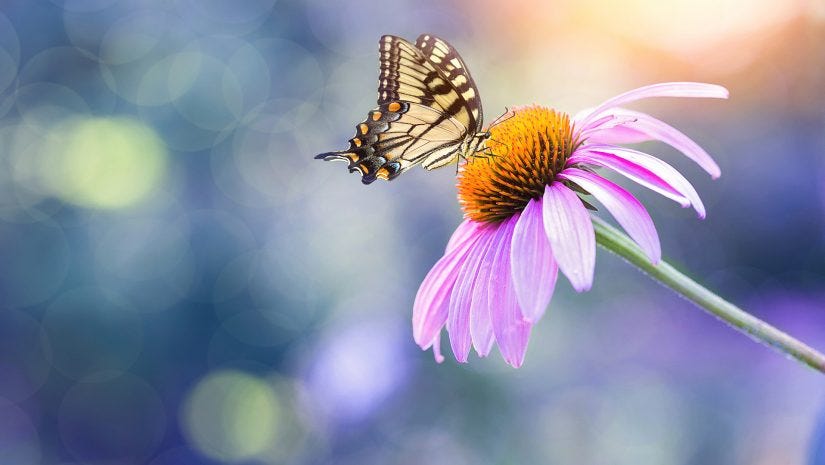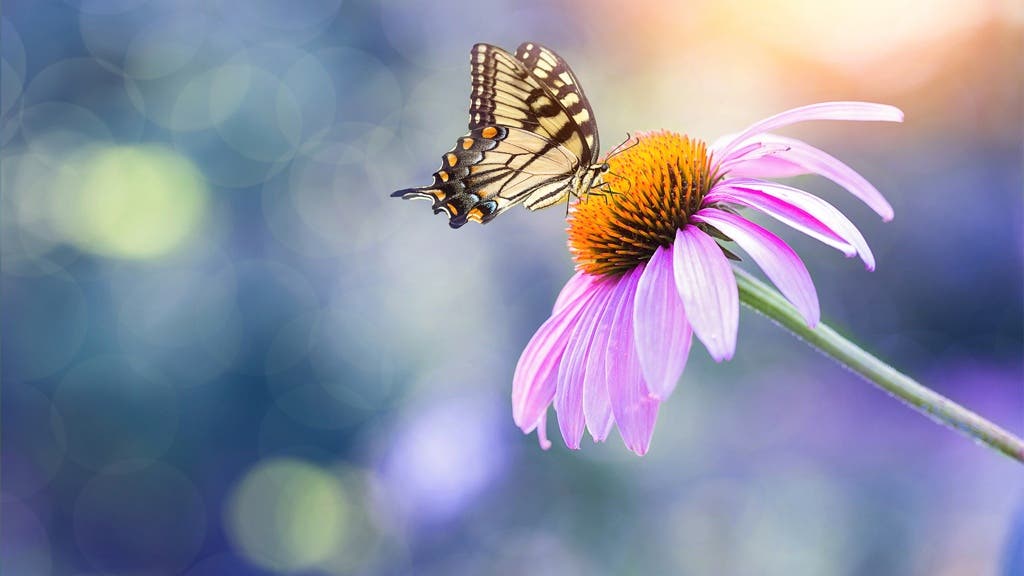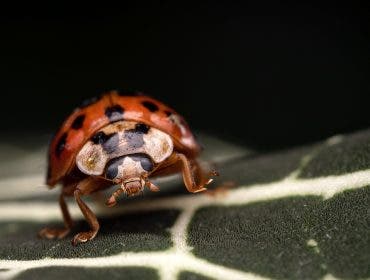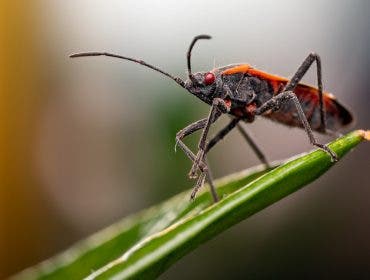Shopping for a macro lens? First, let’s get the definition right: To get 1:1 magnification, which you need for true macro photography, you need to buy a dedicated, non-zoom macro lens. But which one is best for you?
Macro lenses come in a variety of fixed focal lengths, ranging from 50 to 200mm. Some macro lenses focus down to 1:2 but extend to 1:1 via an optically matched adapter at an additional price. A handful goes beyond 1:1 into super macro photography territory.
Let’s take a close-up look at the top macro lenses available now. Keep in mind that all the lenses (and recommended alternatives for discontinued lenses) in this article are available at Adorama’s Macro Lens department.
How Did We Choose the Best Macro Lenses?
We selected each of the lenses in this list based on a few key criteria. Here are the features and specifications we find most valuable for macro photographers.
Maximum Aperture
When it comes to choosing aperture for macro subjects, flexibility is crucial. Whether you’re shooting with natural light or plan to use ring lights and other external light sources, you will appreciate how a wide maximum aperture provides extra flexibility for different subjects and settings. Selecting an f/1.8 or f/2.8 lens ensures that you’ll always have enough light to get the shot.
Focusing Crispness and Clarity
Complex autofocusing systems and image stabilization deliver more reliable results to macro photographers. The better these motorized components are, the better your resulting macro images will be.
Attractive Bokeh
All of the lenses on this list have attractive, rounded bokeh thanks to high-quality lens elements, rounded aperture blades, and manufacturers who understand that out-of-focus areas are often just as important as the subject to the overall quality of the image.
Compatibility with Popular Cameras
Mirrorless cameras and DSLR cameras from Nikon, Canon, and Sony are popular among photographers of all skill levels. The list below prioritizes lenses that work seamlessly with the most popular camera systems.
The 7 Best Macro Lenses
1. Nikon NIKKOR Z MC 50mm f/2.8 Lens
The Nikkor Z MC 50mm is the perfect starter lens for photographers who are new to close-up photography. 50mm is a flexible focal length that you can use for small subjects like flowers, insects, and details, but it also functions well for portraiture, travel photography, and a range of other subjects.
More experienced photographers will love the wide maximum aperture of f/2.8 and the attractive bokeh and background separation it brings to macro work and portraits.
Tack-sharp focus is a vital component of any macro image, and this lens features a focus limiter for quicker and less frustrating focus. Choose between the full focal range or limit the AF to 0.3m-0.16m when you’re very close to your subject. You’ll save time and banish the frustration of watching your AF struggle to find purchase.
Moisture-repelling coatings mean you don’t have to stress about smudges if you accidentally get too close to your subject.
Key Features
- Macro close-ups. 50mm Z-mount close-up macro lens, featuring f/2.8 aperture
- Full 1:1 reproduction ratio resolves the finest detail. 0.16m minimum focus distance
- Compact, light-weight design isı easy to carry around
- BOKEH. Beautiful background blur to isolate subject from the background
- Lens barrel indicator for reproduction ratio and focus distance
- Repels dust, dirt, and moisture; fluorine coat on front element for antifouling resistance
- Lens Format: Full frame
- Fixed Focal Length: 50mm
- Lens Type: Macro lens, standard lens
- Image Stabilization: No
- Special Features: Aspherical
- Focus range limiter switch
2. Nikon NIKKOR Z MC 105mm f/2.8 VR S Lens
A 100mm to 105mm focal range offers a special sweet spot for macro photography, which means the Nikkor Z MC 105mm is poised to make any macro subject shine.
Designed for use with the Z series mirrorless cameras, this lens is fully compatible with Focus Shift Mode. This popular setting takes the guesswork and difficulty out of focus stacking. So whether you’re shooting in a low light or in a bright environment, you can take advantage of the maximum f/2.8 aperture without worrying about losing detail to shallow depth of field.
Dynamic macros of flowers, insect wings, and other bright, translucent objects often benefit from backlighting, but ghosting and flare can ruin an otherwise perfect image. With two anti-reflective coatings, the 105mm will perform well no matter where the light source is in proximity to your subject.
Additionally, the 105mm is a particularly versatile focal length for wedding photographers. You’ll be able to transition from bridal portraits to ring details without missing a beat.
Key Features
- Macro close-ups. 105mm Z-mount close-up macro lens, featuring f/2.8 aperture
- Full 1:1 reproduction ratio resolves the finest detail. 0.29m minimum focus distance
- Light-weight design. For easy and comfortable carrying
- S-Line Optics reserved for premium Nikkor Z lenses
- BOKEH. Beautiful background blur to isolate subject from the background without rings or edges
- Repels dust, dirt and moisture. Fluorine, ARNEO, and Nano Crystal coatings
- Lens Format: Full frame
- Fixed Focal Length: 105mm
- Lens Type: Macro Lens, Medium Telephoto Lens
- Image Stabilization. 4.5 stop vibration reduction provides stabilization for confident hand-held shooting
- Special Features: Ultra-quiet STM Autofocus System, Aspherical
- Focus range limiter switch
3. Canon RF 100mm f/2.8 L Macro IS USM Lens
The Canon EF 100mm f/2.8L series lens has been popular for years among macro, portrait, food, and product photographers who use DSLR cameras. Now mirrorless photographers can take advantage of this impressive lens too. Designed for use with any of Canon’s EOS R series cameras, this lens is packed with features that you won’t find in any other camera brand.
First, the RF 100mm f/2.8 has a unique Spherical Aberration Control Ring. With a quick adjustment, you can decide how soft or hard edged you want background bokeh to appear. This is a useful perk for photographing jewelry, flowers, portraits, and more.
The other unique feature in the RF 100mm is the ability to increase the subject’s magnification of up to 1.4x by shooting at the closest end of the focusing range. You’ll have a lot more flexibility in how your macro subjects appear in your images.
Key Features
- Macro close-ups: 100mm RF-mount close-up macro lens, featuring f/2.8 aperture
- World’s first medium telephoto macro lens with a maximum magnification of 1.4x at 0.26m focusing distance
- Spherical aberration (SA) control ring
- Dust and weather resistant with Super Spectra coating and fluorine coating on front element
- Lens Format: Full frame
- Fixed Focal Length: 100mm
- Lens Type: Macro lens, medium telephoto lens
- Optical image stabilizer with up to 5 stops of shake correction
- Hybrid IS compensates for angular and shift camera shake during macro shooting
- High speed, smooth and quiet autofocus with Dual Nano USM
- Focus range limiter switch
4. Canon RF 35mm f/1.8 Macro IS STM Lens
When you need a more compact macro lens for your mirrorless Canon camera body, the RF 35mm f/1.8 ticks all the most important boxes while staying incredibly budget friendly.
35mm is a classic focal length for many types of photography, which makes this lens a very versatile choice. It’s ideal for photographers who do macro work but don’t want to limit themselves to one type of subject matter.
Photograph any subject in any lighting situation thanks to a super-wide maximum aperture of f/1.8 and a 5-stop shake correction image-stabilization system. When you need a bit more depth of field than f/1.8 allows, you can stop down and still enjoy tack-sharp images.
Like many other RF lenses, the 35mm f/1.8 includes a control ring that you can program to quickly change your preferred camera settings. Macro photographers should consider programming the ring to adjust aperture, to make fast DOF adjustments without recomposing or messing with menus.
Key Features
- Compact RF mount 35mm macro lens with 0.5x magnification ratio and f/1.8 maximum aperture
- Minimum focusing distance of 0.56 ft./0.17m.
- Control ring for direct setting changes
- 12-pin connector for fast lens-to-camera communication and a short back focus design for enhanced optical performance
- Optical image stabilization at up to 5 stops of shake correction
- Compatible with Canon’s Macro Twin Lites and MacroRing Lites
- Dust and weather resistant with Super Spectra CoatingLens Format: Full frame
- Fixed Focal Length: 35mm
- Lens Type: Wide-angle macro lens
- High speed, smooth, and quiet autofocus
5. Sigma 105mm f/2.8 DG DN ART Macro Lens (for multiple mounts)
Some macro subjects are particularly skittish when it comes to the various noises that cameras and lenses make. You don’t have to worry about that with Sigma’s 105mm f/2.8 Art Series, which prioritizes silence.
This lens’ physical aperture-adjustment ring makes an audible click when you adjust it, to help you avoid accidental changes. When noise-free operation is your priority, just turn off the click with the flip of a switch.
Equipped with face/eye detection and a Hyper-Sonic Motor (HSM), this lens locks onto small subjects easily and adjusts for camera or subject movement without jarring noises. This lens also works seamlessly with Sigma’s 1.4x and 2.0x teleconverters to add flexibility to your subject’s magnification level.
Sigma Art Series lenses are among the most optically impressive third-party lenses on the market, and this lens designed for mirrorless cameras is no exception.
Key Features
- 105mm E mount (other lens mounts available) close-up macro lens, featuring f/2.8 aperture
- Full 1:1 reproduction ratio with 11.6″ (29.5cm) minimum focus distance
- Compatible with in-camera body image stabilization systems
- Art Series lenses prioritize optical performance with edge-to-edge sharpness
- Aperture control ring with optional clicking
- Dust and splash proof with water and oil-repellent coating and Super Multi-Layer coating
- Compatible with Sigma’s teleconverters
- Lens Format: Full frame
- Fixed Focal Length: 105mm
- Lens Type: Macro lens, medium telephoto lens
- Special Features: Ultra-quiet HSM autofocus system, aspherical
- Focus range limiter switch
6. Sony FE 90mm f/2.8 Macro G OSS Lens
Accurate, sharp focus is a priority for every macro photographer and the Sony FE 90mm f/2.8 Macro G OSS lens sets you up for success in three key ways.
First, a unique focus hold button on the side of the lens barrel lets you lock in focusing distance, so you don’t have to worry about discovering soft images after the fact.
Second, all of the lens’ moving internal focusing elements are located in the very center of the lens. That means changing focus doesn’t cause the lens to move or change in length or size. You can adjust focus freely without encroaching on living subjects.
Finally, if you decide mid-shot if you want to switch from autofocus to manual or vice versa, changing between focus modes is easy with a sliding focus ring. You don’t have to move your eye from the viewfinder or even readjust your hand placement to make this easy and quiet adjustment.
Key Features
- 90mm E mount close-up macro lens, featuring f/2.8 aperture
- Full 1:1 reproduction ratio with 11.02″ / 28 cm minimum focus distance
- Integrated Optical SteadyShot image stabilization for handheld shooting
- Corner-to-corner sharpness w/ advanced aspherical elements
- Direct Drive SSM (DDSSM) for quiet, precise focusing
- Dust and moisture resistant with Nano AR coating to effectively suppress reflections and Super ED glass with multi-coating to reduce flare and ghosting
- Lens Format: Full frame
- Fixed Focal Length: 90mm
- Lens Type: Macro lens, medium telephoto lens
- Special Features: Sliding focus ring and focus lock button, aspherical
- Focus range limiter switch
7. Venus Laowa 100mm F/2.8 2X Ultra Macro APO Lens (for multiple mounts)
When your top priority is maximum magnification level, the Venus Laowa 100mm f/2.8 lens should be at the top of your list. With 2:1 magnification, your images of insects, flowers, and other minute details will be much larger than life and rich with detail.
This lens is fully manual, both in terms of focus and aperture adjustment. While that may scare some photographers who are new to taking macro photos, the metal-case build quality, anti-reflective coatings, and lens elements make this a worthwhile lens at an affordable price.
You’ll also love the distinct lack of chromatic aberration both in the in-focus areas and the blurred bokeh areas of your photos. When paired with a sturdy tripod and a high-end mirrorless or DSLR camera, this lens can create very impressive macro images. Nikon, Canon, Sony, Leica, and Pentax shooters should definitely check out this lens.
Key Features
- 100mm close-up macro lens, featuring f/2.8 aperture for Canon EF, Canon EOS RF, Leica L, Nikon F, Nikon Z, Pentax K, and Sony E mount
- Up to 2:1 reproduction ratio with 9.72″ / 24.7cm minimum focus distance
- Metal lens enclosure for added durability
- Apochromat APO design (invisible CA) to control chromatic aberration throughout the image
- Manual focusing
- Aperture adjustment ring
- Lens Format: Full frame
- Fixed Focal Length: 100mm
- Lens Type: Macro Lens, Medium Telephoto Lens
What Are The Different Types Of Lenses for Macro Photography?

Short Macro Lens (30-50mm)
This most common focal length for macro lenses gives a somewhat more comfortable working distance of between 9 and 12 inches for 1:1 macro (depending on which focal length lens you’re using). In most cases, these lenses are also well-suited for portraits, as the focal length is more flattering when photographing faces. There’s a wide range of prices starting at around $450.00 for consumer-level optics.
Standard Macro Lens (60-105mm)
This most common focal length for macro lenses gives a somewhat more comfortable working distance of between 9 and 12 inches for 1:1 macro (depending on which focal length lens you’re using). In most cases, these lenses are also well-suited for portraits, as the focal length is more flattering when photographing faces. There’s a wide range of prices starting at around $450.00 for consumer-level optics.
Tele-Macro Lenses (150-200mm)
With a working distance of a foot and a half to two feet for 1:1 magnification, tele-macro lenses let you get up close to hard-to-reach subjects, such as that perfect mushroom that’s visible behind an impenetrable shrub. They are generally pricier, require larger filters, and are somewhat bulkier than standard macros, but they let you get closer to your subject.
Bonus: Use a tele-extender and you can double your working distance when you need to.
Mirrorless Macro Lenses
The mirrorless interchangeable lens compact (MILC) camera category continues to be refined and improved. As a result, a new generation of macro specialty lenses has cropped up. Keep in mind that micro four-thirds lenses cover a 2x equivalent field of view, giving you double the focal length to get the actual coverage.
Frequently Asked Questions About Macro Lenses
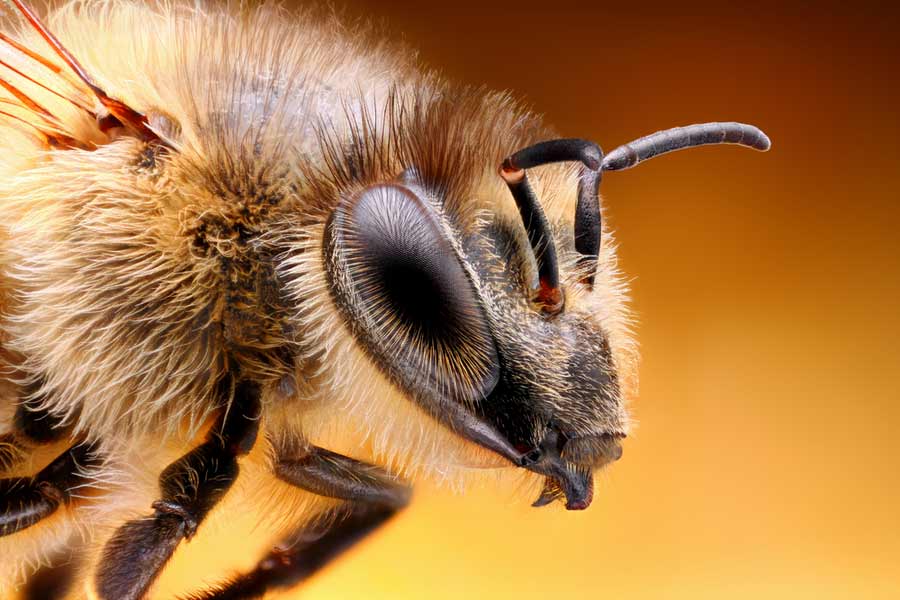
What are macro lenses used for?
Photographers often use macro lenses to capture insects, plants, and small objects. These lenses are ideal for the aforementioned subjects since they’re designed to shoot small subjects at extremely close distances. Using the much nearer focus that macro lenses have, you can fill the frame with your subject and get more detail out of it.
Can macro lenses be used for normal photography?
Yes. Lens manufacturers mostly optimize macro photography lenses for close-ups, but many macro lenses suit general use as well. Macro lenses can get more detail in ultra-sharp focus, which is why they also act as portrait lenses for most pro photographers. 105mm macro camera lenses are perfect for budding sports photographers and capturing general events.
Can a macro lens be used as a telephoto lens?
Good macro lenses make excellent telephoto lenses. But some camera lens makers offer telephoto macro lenses with extra working distance than their shorter counterparts. The depth of field in these long lenses are shallower, too. Also, more working distance from telephoto macro lenses can prevent your photography gear from casting unwanted shadows on your subjects.
Is a 50mm lens good for macro photography?
50mm lenses work best in capturing typical macro shots. However, these types of macro lenses have their drawbacks. 50mm lenses (also known as a nifty fifty) make subjects appear half “life-size” since they usually feature a 1:2 ratio, and require shooting at a much closer distance. But a 50mm lens is a must if you want a general walk-around lens.
Can a macro lens be used for landscape photography?
Yes. Just like ordinary camera lenses, macro lenses are excellent at capturing landscapes. If you get poor light and extremely dreary skies while you’re shooting landscapes, you can focus on micro landscapes. These environments will let you use close focus for particular scenes. Otherwise, you’re better off using non-macro lenses if you’re after wide-angle landscapes.
